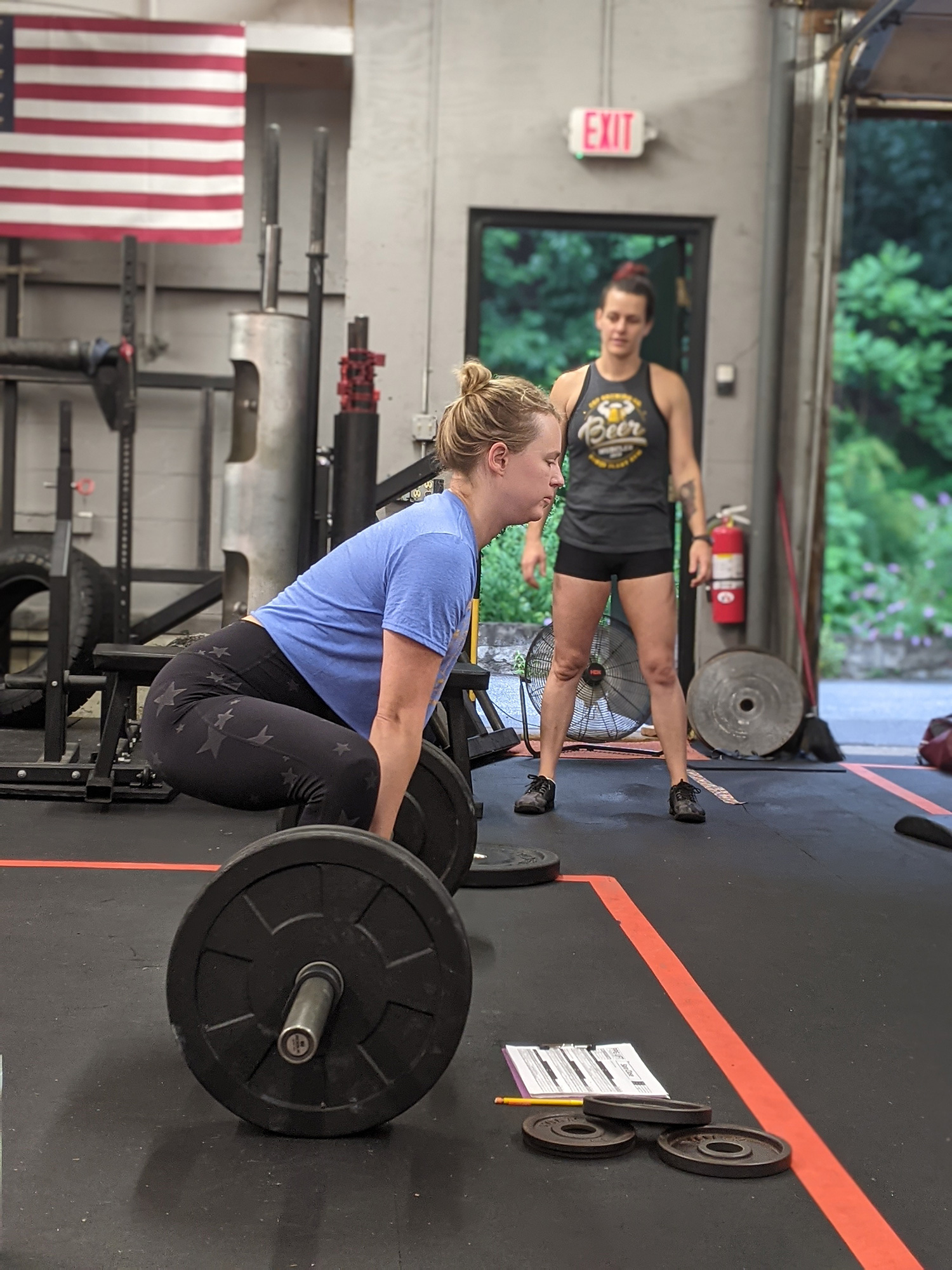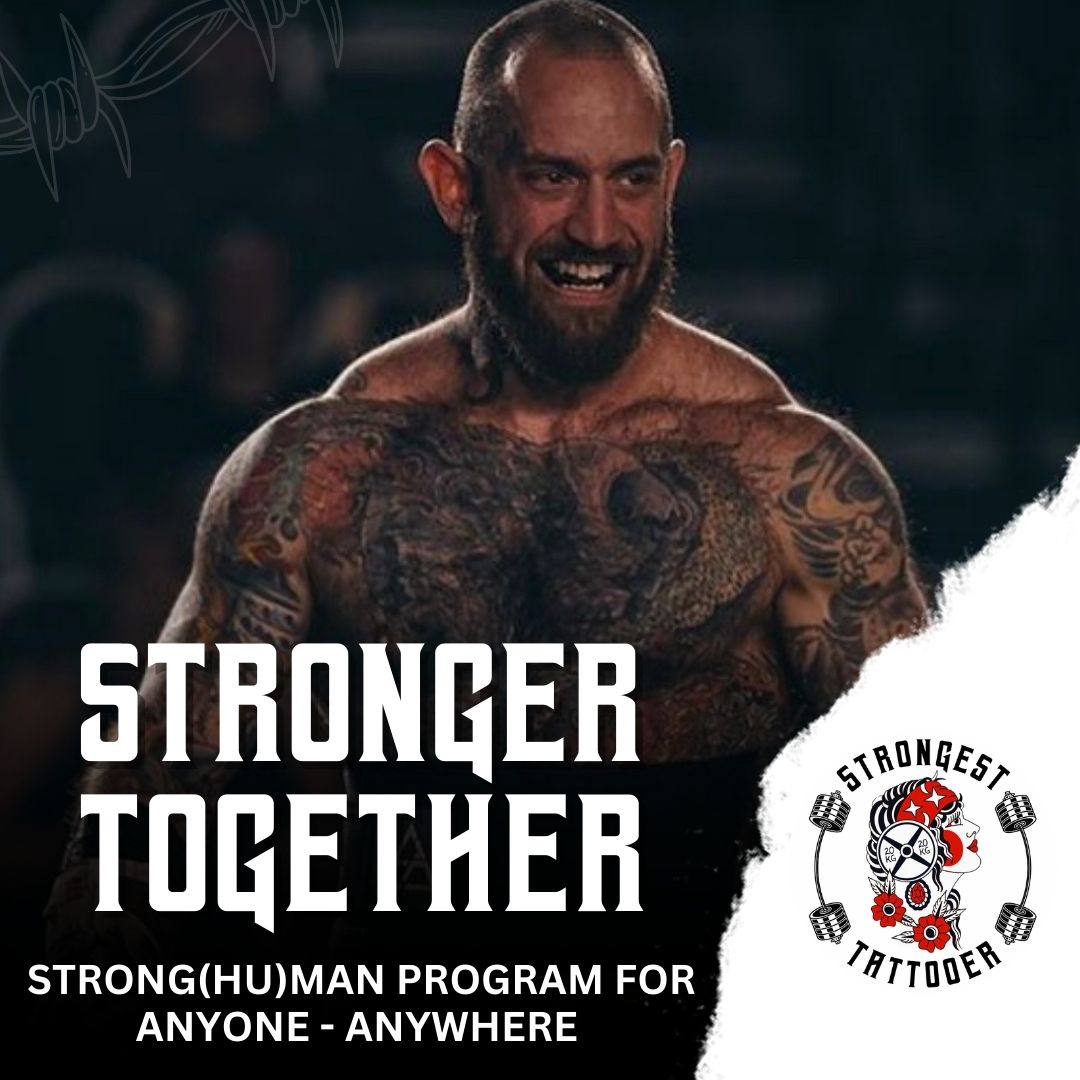
When I go to a “globo” gym, one of the biggest things I notice is the general chaos of how lifters (and coaches!) structure their workouts. There should be method to the madness! Of course, different training goals have different workout structures, and there are multiple ways to go about planning and ordering a workout. However, there are some general principles you can follow to build strength training workouts that are efficient, safe, and effective.
Each piece of this article could be (and will be) an article in its own right. For example, we could talk at length about properly structuring warmups or how to choose primary movements. The purpose of this article is to provide a structural overview of a single strength/strongman training session. From this foundation you can build a workout for just about anything!
When structuring an individual training session, we want to follow these general “rules.” “Rules” is in quotations because there are, of course, exceptions to all of them. The #1 rule is that every athlete is different and every training session should keep that in mind. That being said, here are some general principles that apply in most cases:
- Go from more complex to less complex: Keep things with greater mental and coordination requirements at the beginning of the workout when body and brain are fresh.
- Go from compound to isolation: Put big compound movements (like squats and deadlifts) at the beginning of the workout and work your way “down” to isolation movements (like curls or machines).
- Go from dynamic to static: Movements with lots of power or explosiveness (like box jumps and cleans) are better suited to the beginning of the workout because the muscles are fresher, more able to perform at max capacity, and less prone to fatigue-related injury.
- Notable exceptions: strongman cardio at the end of the workout, pairing explosive bodyweight movements with heavy static lifts (like jumping right after a set of squats)
- Consider compounding effects: Think about how each movement is affected by the one before it and how it will affect the ones after it.
Keeping the above principles in mind, here’s a standard, effective, and safe structure for a strongman or strength-focused training session…
Part 1: Warmup
Warmups should be specific to the athlete and specific to the workout. They prepare the body for movement by getting blood pumping and literally warming up the muscles. It’s a good opportunity to address mobility, stability, and movement pattern concerns directly related to the coming workout.
Part 2: Activation/Movement Prep
This is your opportunity to thoughtfully move through complex patterns and/or “turn on” muscle groups that you’ll use in the session. Some examples include:
- PVC technique work for cleans and jerks (technical movement prep)
- KB swings for sandbag tosses or deadlifts (muscle activation)
- Straight-arm lat pushdowns for deadlift prep (muscle activation)
These should be relatively quick and not taxing on the CNS (central nervous system). Try 1-3 sets of 5-12 reps.
Part 3: Explosive/Dynamic Movements
This is the next step up from activation or movement prep. Not all workouts need both. For example, box jumps cover the bases as activation and as an explosive movement; they’re a great primer for squats, deadlifts, and cleans. If you have something like sandbag tosses as a primary movement, that should also go here.
Generally plan to spend about 2-5 sets of 3-10 reps depending on the movement. Box jumps would be more along the lines of 3×3-5, while sandbag tosses will likely have more total sets if practicing for competition or treating them more like a primary movement.
Part 4: Primary Strength Movement(s)
These are your big compound movements for the day (squat, press, deadlift, etc.). They’re usually heavy and physically taxing. If you’re stacking multiple compound/primary movements in one workout, follow the same general concept of starting more explosively. For example, if you want to front squat and clean & press in one workout, do the clean & press first. There are, of course, exceptions to this “rule,” but it makes sense in most cases.
Part 5: Assistance Movement(s)
These movements supplement the primary movements or events and can be structured in all different ways (eg. circuit, superset, AMRAP, EMOM, etc). They are generally less complex than the primary movement or specific strongman events.
When stacking assistance movements, think about the specific purpose of the movement and how it interacts with the movements before and after it. Decide what stimulus or result you’re going for, and then choose movements and pair them together appropriately.
Part 6: Conditioning
This can be steady state conditioning, bodyweight/light interval training, or a strongman-style medley. Try mixing different kinds of conditioning with different workouts during the week so you end up with a mix of bodyweight, strongman-style, and “traditional” interval training.
Part 7: Cooldown
The cooldown is the best time to work on any mobility and stretching. It’s not “mandatory,” but it’s a good idea if you have time or if you have something specific to work on.
Other Considerations
Event Order
If you know the order of events for a specific strongman competition, it can be very beneficial to train the events in that order even if it’s “non-standard.” For example, press events are typically first in a competition, and sandbag tosses are typically first in a training session. However, if you know that sandbag tosses will be the middle or last event, it might make more sense to train something heavy first and practice doing the throws under fatigue. Same with presses – it might make more sense to pre-fatigue some of the muscles and then press later in the session.
Keep in mind that it’s not ideal to learn new technique or practice complex technique at the end of a hard session. So when you’re first learning a skill or getting back in touch with it in the first few weeks of training, keep it where it “belongs.” Then shift it to later in the workout or later in the week later in the training cycle.
Equipment Availability or Layout
Depending on your training location, it might not be convenient to superset things or put them in a medley in the “ideal” way. That’s okay! Something is always better than nothing. Just work with what you have. You can also get creative and sub in movements that have similar physical requirements but are more easily accessible.
Movement Selection
Not every training session needs to have every one of the above components, and some sessions might have multiples in one category. Ultimately, you want to choose movements that are relevant and specific to the individual athlete and their goals, competition, strengths/weaknesses, etc.
In Conclusion
There are plenty of different ways to structure training sessions, and many could be considered “correct.” The above is probably the most common and best supported by research and evidence. That being said, the #1 goal is always to serve the individual athlete. Use this template as a starting point and build from it. Adjust based on results for the individual, and be open to learning and adapting as you go.
Need Help or Have Other Ideas?
We’re here for it! Email us (strongmandottraining@gmail.com) with any questions or to set up a free 15-min event consulting call. We’re happy to look over programming you’ve written and provide feedback, help you work through anything you find confusing about programming, or talk about what you’ve noticed in your own coaching experience. We want to hear it all!



